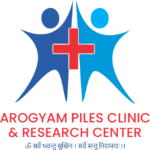
An anal fistula is a common condition characterized by an abnormal tunnel-like tract that connects the anal canal to the skin around the anus. Fistulas can cause pain, discomfort, and recurrent infections, affecting a person’s quality of life. The LIFT (Ligation of Intersphincteric Fistula Tract) procedure has emerged as a minimally invasive surgical technique for treating anal fistulas effectively. In this blog, we will explore how the LIFT procedure is performed, its benefits, and its drawbacks.
How is the LIFT Procedure Performed?
The LIFT procedure is typically performed under general anesthesia, and it involves the following steps:
1. Preoperative Assessment: Before the procedure, the surgeon will conduct a thorough examination of the anal fistula using various diagnostic techniques, such as a physical examination, imaging studies (e.g., MRI), and possibly a fistulogram. This assessment helps determine the precise location and complexity of the fistula, guiding the surgical approach.
2. Probing and Identification: The surgeon passes malleable probe through external opening and guide toward internal opening. In this way fistula tract is identified and marked for subsequent treatment.
3. Ligation of the Fistula Tract: Small incision is made over intersphincteric space and dissection is made upto fistula tract. Fistula tract is lifted and ligated with suture. This ligation process helps close off the abnormal tract and promotes healing.
4. Closure of the Internal Opening: Once the fistula tract is ligated, the internal opening in the anal canal is closed using a variety of techniques. This closure prevents further contamination from the feaces and reduces the risk of recurrent infection.
5. Wound Management: The external incision is then closed with absorbable sutures, and appropriate wound care instructions are provided. Depending on the complexity of the fistula, additional procedures like sphincterotomy (partial division of the anal sphincter muscles) may be performed to facilitate healing and prevent fistula recurrence.
Benefits of the LIFT Procedure
The LIFT procedure offers several advantages over traditional open surgery for anal fistulas. These benefits include:
1. Minimally Invasive: The LIFT procedure is minimally invasive compared to open surgery, which involves large incisions and extensive tissue dissection. The smaller incisions used in LIFT result in less tissue trauma, reduced postoperative pain, and faster recovery.
2. Preservation of Anal Sphincter Function: The LIFT technique aims to preserve anal sphincter function, minimizing the risk of complications such as fecal incontinence. By avoiding extensive muscle division, the procedure helps maintain bowel control and improves patient outcomes.
3. Lower Recurrence Rates: Studies have shown that the LIFT procedure has favorable outcomes in terms of fistula closure and lower recurrence rates compared to traditional techniques. The ligation of the fistula tract and closure of the internal opening contribute to improved healing and reduce the likelihood of fistula recurrence.
4. Shorter Hospital Stay: Due to its minimally invasive nature, the LIFT procedure usually requires a shorter hospital stay compared to open surgery. Patients can often return home on the same day or the following day, leading to faster recovery and reduced healthcare costs.
Drawbacks and Considerations
While the LIFT procedure offers several advantages, it is important to consider potential drawbacks and limitations:
1. Technical Expertise: The LIFT procedure requires specialized training and expertise in anal fistula surgery. It is typically performed by colorectal surgeons or proctologists who have experience with advanced anal surgical techniques.
2. Patient Selection: The LIFT procedure may not be suitable for all types of anal fistulas. Complex fistulas with multiple tracts or those associated with underlying conditions (such as Crohn’s disease) may require alternative surgical approaches. Patient selection and proper evaluation are crucial to determine the suitability of the LIFT procedure.
3. Potential Complications: As with any surgical procedure, the LIFT technique carries some risks of complications, although they are generally rare. Possible complications include infection, bleeding, wound healing problems, and recurrence of the fistula.
4. Limited Long-Term Data: While the LIFT procedure has shown promising results in the short to medium term, long-term data on its efficacy and durability are still relatively limited. Further studies are needed to evaluate its long-term outcomes and compare them to traditional surgical approaches.
Conclusion
The LIFT (Ligation of Intersphincteric Fistula Tract) procedure is a minimally invasive surgical technique for treating anal fistulas. With its advantages of minimalinvasiveness, preservation of anal sphincter function, lower recurrence rates, and shorter hospital stay, the LIFT procedure offers a promising approach to managing anal fistulas. However, it is essential to consider the technical expertise required, patient selection criteria, potential complications, and the need for further long-term data.
If you or someone you know is suffering from an anal fistula, it is crucial to consult with a qualified colorectal surgeon or proctologist to discuss the best treatment options available. The LIFT procedure may be a suitable choice for certain cases, but a comprehensive evaluation by a medical professional is necessary to determine the most appropriate course of action. Arogyam Piles Clinic and Research Center, located in Mohali, Chandigarh is well known institution for Fistula treatment with advance Kshar Sutra technique, which is having highest success rate and nil complication. To fix an appointment with there Kshar Sutra specialist doctor visit there official website www.arogyampilesclinic.com or directly call +91 96467 64444.
Remember, this blog serves as an informative guide and should not replace medical advice. Each individual’s condition is unique, and treatment decisions should be made in consultation with a healthcare professional.




